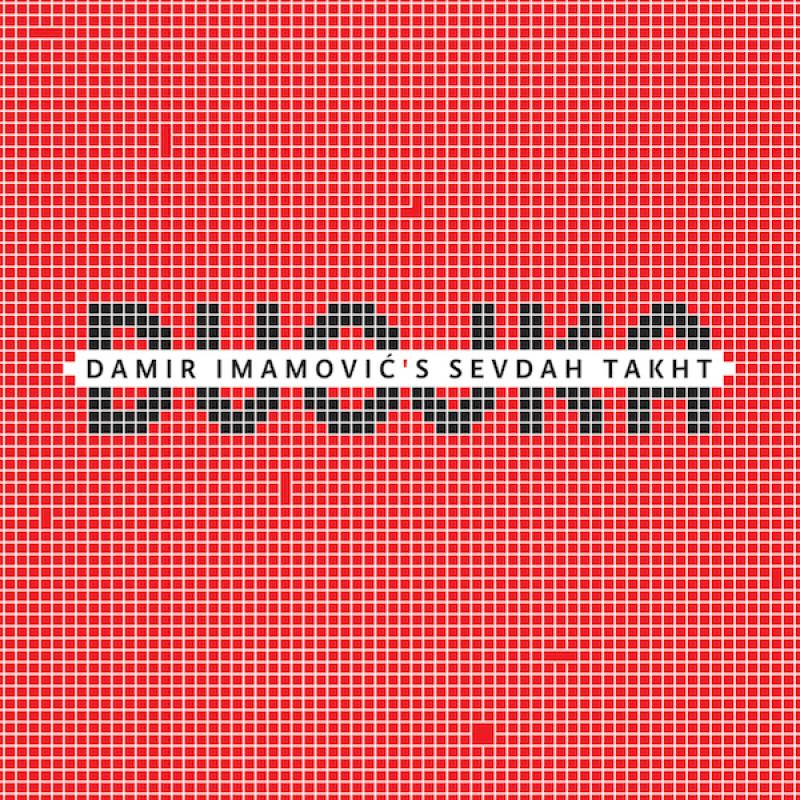CD: Damir Imamović's Sevdah Takht - Dvojka | reviews, news & interviews
CD: Damir Imamović's Sevdah Takht - Dvojka
CD: Damir Imamović's Sevdah Takht - Dvojka
Bosnian melancholy reaches deep into the soul

Black bile, the dark blood which feeds the melancholy mood, runs through musics that resonate with the heart’s longing. In Arabic sawdah is a word which draws together the ideas of black bile and, in Ottoman Turkey, the pain-filled desire for the beloved. It lies at the root of the saudade of Portuguese fado but also the Bosnian musical genre known as sevdah or sevdalinka.
In their second album Damir Imamović’s Sevdah Takht stay true to the tradition of their folk roots, while subtly playing with a more contemporary sound. They manage very skilfully to reach back to the pure form, stripping away the accordion that was so often the mainstay of sevdah ensembles, and yet refusing the temptation to fuse with blues or rock, as Mostar Sevdah Reunion did with some success.
They work instead, with a warm and intimate sound produced by Chris Eckman, with the discrete guitar and tambur from vocalist Damir Imamović, delicate percussion from Nemad Kovačić, supple and slightly jazzy electric bass from Ivan Mihajlović, and subtle but immensely potent interventions from Ivan Durić on the violin.
At the heart of this bewitching music, there is a beautiful voice: Damir Imamović, has a warm tenor, and complete mastery of the melismatic decorations which characterise sevdah vocals. It’s easy to overdo, but he bends his voice lightly, letting the microtones flow by seamlessly always at the service of emotional expression rather than virtuosic display. This is an ancient technique, which runs back to sources in Central Asia, where such singing was believed to offer a gateway to the divine, and has fed the singing styles of Iran, Turkey, North Africa, the Sephardi diaspora, Bulgaria, Greece, the Balkans, the Roma community and the Iberian peninsula.
In “Lijepa Mara”, Imamović pays tribute to the great Emira Zečaj, whose discovery by a pair of ethnologists in the early 1960s led to a revival of sevdah’s deepest roots, often no more than a voice and a saz. Damir Imamović’s Sevdah Takht manage something difficult: to draw at the source while making the tradition new.
rating
Share this article
The future of Arts Journalism
You can stop theartsdesk.com closing!
We urgently need financing to survive. Our fundraising drive has thus far raised £49,000 but we need to reach £100,000 or we will be forced to close. Please contribute here: https://gofund.me/c3f6033d
And if you can forward this information to anyone who might assist, we’d be grateful.

Subscribe to theartsdesk.com
Thank you for continuing to read our work on theartsdesk.com. For unlimited access to every article in its entirety, including our archive of more than 15,000 pieces, we're asking for £5 per month or £40 per year. We feel it's a very good deal, and hope you do too.
To take a subscription now simply click here.
And if you're looking for that extra gift for a friend or family member, why not treat them to a theartsdesk.com gift subscription?
more New music
 Sad and Beautiful World: Mavis Staples offers words of wisdom
Soul sister sings on
Sad and Beautiful World: Mavis Staples offers words of wisdom
Soul sister sings on
 theartsdesk on Vinyl 93: Led Zeppelin, Blawan, Sylvester, Zaho de Sagazan, Sabres of Paradise, Hot Chip and more
The most extensive, wide-ranging record reviews in the galaxy
theartsdesk on Vinyl 93: Led Zeppelin, Blawan, Sylvester, Zaho de Sagazan, Sabres of Paradise, Hot Chip and more
The most extensive, wide-ranging record reviews in the galaxy
 Suzanne Vega and Katherine Priddy, Royal Albert Hall review - superlative songwriters
Two brilliant voices fill the Royal Albert Hall
Suzanne Vega and Katherine Priddy, Royal Albert Hall review - superlative songwriters
Two brilliant voices fill the Royal Albert Hall
 Kali Malone and Drew McDowell generate 'Magnetism' with intergenerational ambience
Young composer and esoteric veteran achieve alchemical reaction in endless reverberations
Kali Malone and Drew McDowell generate 'Magnetism' with intergenerational ambience
Young composer and esoteric veteran achieve alchemical reaction in endless reverberations
 Benson Boone, O2 London review - sequins, spectacle and cheeky charm
Two hours of backwards-somersaults and British accents in a confetti-drenched spectacle
Benson Boone, O2 London review - sequins, spectacle and cheeky charm
Two hours of backwards-somersaults and British accents in a confetti-drenched spectacle
 Midlake's 'A Bridge to Far' is a tour-de-force folk-leaning psychedelic album
The Denton, Texas sextet fashions a career milestone
Midlake's 'A Bridge to Far' is a tour-de-force folk-leaning psychedelic album
The Denton, Texas sextet fashions a career milestone
 'Vicious Delicious' is a tasty, burlesque-rockin' debut from pop hellion Luvcat
Contagious yarns of lust and nightlife adventure from new pop minx
'Vicious Delicious' is a tasty, burlesque-rockin' debut from pop hellion Luvcat
Contagious yarns of lust and nightlife adventure from new pop minx
 Music Reissues Weekly: Hawkwind - Hall of the Mountain Grill
Exhaustive box set dedicated to the album which moved forward from the ‘Space Ritual’ era
Music Reissues Weekly: Hawkwind - Hall of the Mountain Grill
Exhaustive box set dedicated to the album which moved forward from the ‘Space Ritual’ era
 'Everybody Scream': Florence + The Machine's brooding sixth album
Hauntingly beautiful, this is a sombre slow burn, shifting steadily through gradients
'Everybody Scream': Florence + The Machine's brooding sixth album
Hauntingly beautiful, this is a sombre slow burn, shifting steadily through gradients
 Cat Burns finds 'How to Be Human' but maybe not her own sound
A charming and distinctive voice stifled by generic production
Cat Burns finds 'How to Be Human' but maybe not her own sound
A charming and distinctive voice stifled by generic production
 Todd Rundgren, London Palladium review - bold, soul-inclined makeover charms and enthrals
The wizard confirms why he is a true star
Todd Rundgren, London Palladium review - bold, soul-inclined makeover charms and enthrals
The wizard confirms why he is a true star

Add comment